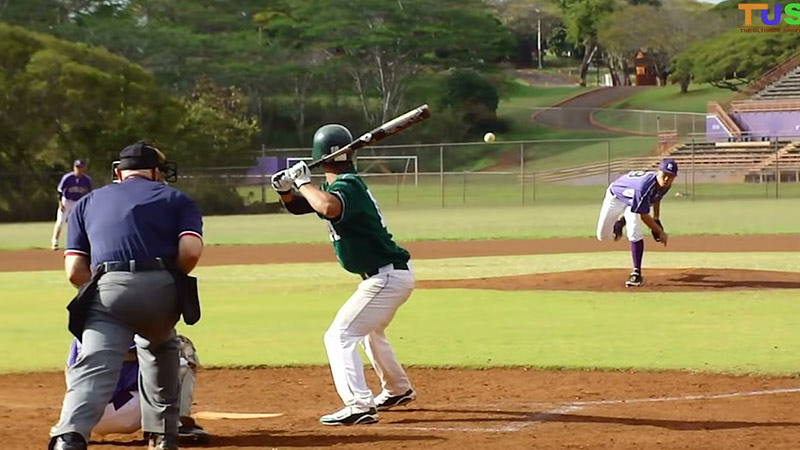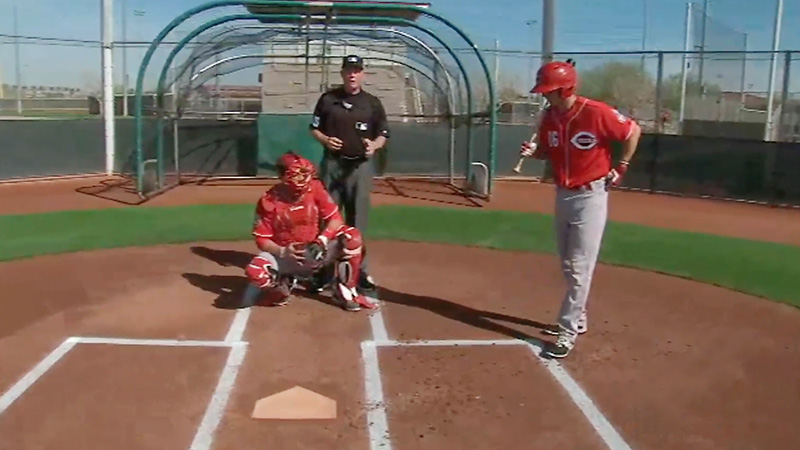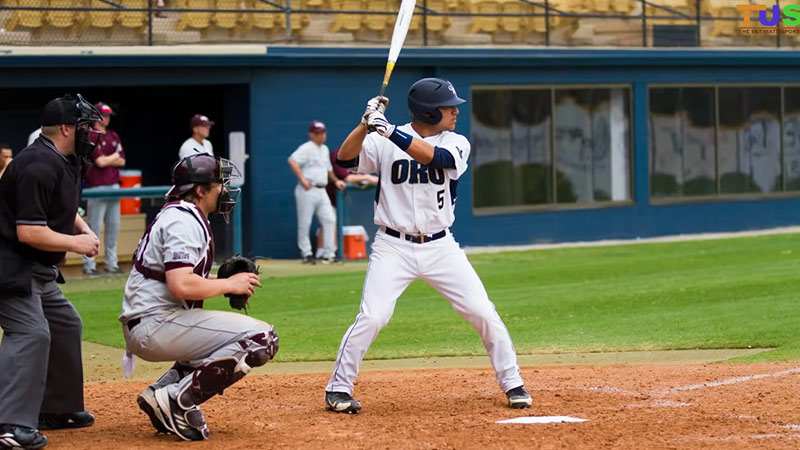The three batter rule in baseball has been introduced with the aim of speeding up the pace of the game and reducing the number of pitching changes.
While there are divided opinions on the rule, it brings significant implications for team strategies, managerial decision-making, and the overall dynamics of the game. Supporters argue that it streamlines game flow, encourages strategic thinking, and enhances fan engagement.
On the other hand, opponents express concerns about the impact on specialized relief pitchers and limitations on strategic options. The ongoing debate among fans, players, and experts reflects the passion and engagement of the baseball community.
As the rule undergoes trials in minor league games, its potential adoption in Major League Baseball remains a topic of speculation. However, let’s learn the entire process properly.
The Three Batter Rule
The three batter rule in baseball refers to a regulation that mandates relief pitchers to face a minimum of three consecutive batters before being replaced or finishing the inning they enter.
This rule was introduced to streamline the pace of the game by reducing the number of pitching changes, which often caused delays and slowed down the overall flow of play.
Requirement for Relief Pitchers to Face the Rule
Under the three batter rule, once a relief pitcher is brought into the game, they must pitch to at least three consecutive batters before being substituted, unless they manage to complete the inning.
This means that pitchers can no longer be used for short-term appearances solely to exploit favorable matchups against specific hitters. The rule applies to both left-handed and right-handed pitchers, as well as any subsequent pitching changes within the same inning.
Exceptions to the Rule
While the three batter rule generally applies to all relief pitchers, there are a few exceptions. If a pitcher enters the game and manages to complete the inning by retiring the remaining batters, they are not required to face three hitters.
Additionally, in the event of an injury suffered by the pitcher, they may be removed from the game without having to fulfill the three batter minimum. These exceptions ensure that the rule does not compromise player safety or hinder the management of pitching staff in critical situations.
Rationale Behind the Three Batter Rule

Behind the 3 batter rules, there are some significant rationales. These are discussed below.
The Need to Speed Up the Pace of the Game
The rationale behind implementing the three batter rule in baseball is primarily driven by the desire to accelerate the pace of the game. Over the years, baseball games have gradually become longer, which has led to concerns among fans, broadcasters, and league officials.
By reducing the number of pitching changes, it is believed that the game can regain a faster tempo, making it more appealing to viewers and potentially attracting a younger audience with shorter attention spans.
How Frequent Pitching Changes Can Slow Down the Game
Frequent pitching changes have been identified as one of the factors contributing to the extended duration of baseball games. Each time a new pitcher is brought into the game, there is a break in the action, often accompanied by commercials and delays.
These interruptions can disrupt the flow of the game, resulting in longer overall game times. The three batter rule aims to minimize these disruptions by limiting the number of pitching changes, thereby promoting a more continuous and engaging experience for fans.
Specialization of Relief Pitchers and Its Impact on the Game
The increasing specialization of relief pitchers, particularly left-handed specialists or “LOOGYs” (Lefty One-Out GuYs), has had a significant impact on the dynamics of the game.
Managers have frequently utilized these specialists to exploit platoon advantages, matching them up against specific hitters based on handedness. While this strategic approach has its merits, it has also contributed to longer game times and decreased the involvement of starting pitchers.
The three batter rule seeks to address this issue by encouraging a more well-rounded usage of relief pitchers and promoting a greater emphasis on overall pitching skills rather than exploiting specific matchups.
The rationale behind the implementation of the three batter rule is centered on the goal of enhancing the pace of the game.
Impact on Team Strategies
The impact of the 3 batter rules on the team strategies is discussed below.
The Strategic Considerations for Managers
The implementation of the three batter rule has significant implications for the strategic decisions made by managers during games. They must now carefully evaluate the matchups between their relief pitchers and the opposing hitters.
Considering factors such as batting order, hitter tendencies, and pitcher effectiveness against specific handedness, managers must determine the optimal time to deploy their bullpen arms.
This requires a deeper understanding of their pitchers’ capabilities and the ability to anticipate potential scenarios throughout the game.
Considering the Order of Hitters and Available Pitchers
The three batter rule necessitates a more strategic approach to managing the pitching staff. Managers must consider the order of hitters they are likely to face when making pitching changes.
They need to assess which pitchers in their bullpen are best suited to handle particular sections of the opposing lineup, taking into account factors such as handedness, pitch repertoire, and recent performance.
This decision-making process becomes crucial in maximizing the effectiveness of their relief corps while abiding by the rule’s requirements.
Impact on the Decision-making in the Bullpen
The three batter rule fundamentally alters the decision-making process in the bullpen. Managers must balance their desire to exploit favorable matchups with the need to adhere to the rule’s minimum batter requirement.
They may need to factor in the likelihood of pinch-hitting substitutions, potential defensive shifts, and upcoming situations in the game when determining the appropriate time to make pitching changes.
The rule also impacts the utilization of specialized left-handed or right-handed relievers, as managers must now consider their versatility and ability to retire hitters from both sides of the plate.
In practice, the rule forces managers to think more strategically about their bullpen management. They may opt for pitchers with a wider skill set, capable of facing both left-handed and right-handed hitters effectively.
It may also lead to more thoughtful pre-game planning, as managers consider potential matchups and adjust their bullpen usage accordingly.
The three batter rule challenges managers to adapt their strategies, fostering a more dynamic and thoughtful approach to navigating the game’s late innings.
Divided Opinions on the Rule

There are tons of criticism and arguments in favor or against the rule. They are discussed below.
Arguments in Favor of the Three-Batter Rule
Supporters of the three-batter rule highlight several benefits it brings to the game. One key argument is that it helps streamline the pace of play by reducing the number of pitching changes, leading to shorter game times and a more engaging experience for fans.
They argue that frequent pitching changes disrupt the flow of the game and contribute to a slower tempo.
The rule also encourages a more strategic approach to bullpen management, as managers need to carefully assess their pitcher’s ability to face multiple batters, promoting more thoughtful decision-making.
Arguments Against the Rule and Concerns About Its Impact
Opponents of the three batter rule express various concerns regarding its implementation. Some argue that it diminishes the importance of specialized relief pitchers, particularly left-handed specialists, who have traditionally excelled in specific matchups against left-handed hitters.
Critics contend that the rule limits managerial flexibility and strategic options, as managers may be forced to keep a struggling pitcher on the mound for longer than desired.
Additionally, there are concerns about potential injuries if a pitcher is fatigued or not at their best when required to face additional batters.
The Ongoing Debate Among Fans and Experts
The three batter rule has sparked a lively debate among fans, players, and experts in the baseball community. Supporters argue that the rule is a necessary step towards modernizing the game and catering to the preferences of contemporary audiences who seek faster-paced entertainment.
They believe it will help attract new fans and make the game more appealing to younger generations. However, opponents emphasize the importance of tradition and argue that the rule disrupts the delicate balance between offense and defense in baseball.
They contend that it interferes with the strategic nuances and specialization that have been part of the game for decades.
The ongoing debate surrounding the rule reflects the contrasting viewpoints within the baseball community.
Fans, players, and experts continue to discuss and evaluate its impact on the game, highlighting the potential benefits and drawbacks associated with the implementation of the three batter rule.
Implementation and Potential Future Changes
The three batter rule has undergone testing in minor league games as a way to gauge its impact and effectiveness. By implementing the rule in the minor leagues, Major League Baseball can assess its implications on game flow, strategy, and fan reception.
The trial period provides valuable data and feedback that can inform potential adjustments or refinements to the rule before considering its adoption at the major league level.
Speculation on the Potential Adoption
Based on the trial runs in the minor leagues, there is speculation about the potential adoption of the three batter rule in Major League Baseball.
While no final decision has been made, the success or challenges observed during the trial period could influence the league’s decision-making process.
The rule’s impact on game pace, fan engagement, and strategic dynamics will likely be carefully evaluated before any definitive steps are taken toward implementing the rule in the major leagues.
How do the Other Potential Rule Changes Address Game Length?
In addition to the three batter rule, there are ongoing discussions about other potential rule changes aimed at addressing game length and pace of play.
These discussions encompass various aspects of the game, such as mound visits, commercial breaks, and the use of technology for instant replay reviews.
Major League Baseball continues to explore options and seek feedback from fans, players, and other stakeholders to find a balance between preserving the essence of the game and adapting to the evolving preferences and demands of modern audiences.
As the league explores ways to enhance the overall fan experience and maintain the integrity of the game, it is likely that further rule changes or adjustments will be considered in the future.
These potential changes will be guided by the overarching goal of striking a balance between maintaining the essence of baseball and addressing concerns regarding game length and pace, while also considering the perspectives and input of the baseball community as a whole
Comparison of Perspectives on the Three Batter Rule in Baseball
Perspective | Arguments in Favor | Arguments Against |
Game Pace | Speeds up the game, shorter game times | Limits strategic options, disrupts the flow of the game |
Managerial Strategy | Promotes more thoughtful decision-making | Diminishes importance of specialized relief pitchers |
Specialization of Pitchers | Encourages well-rounded pitchers, reduces reliance on specialists | Limits strategic matchups, reduces effectiveness of lefty specialists |
Player Safety | N/A | Concerns about fatigue and increased injury risk |
Fan Engagement | Enhances viewer experience, attracts younger audience | Disrupts tradition, interferes with strategic nuances |
Note: The table provides a comparison of different perspectives on the three batter rule in baseball.
It outlines the arguments in favor of the rule and the arguments against it across various aspects such as game pace, managerial strategy, specialization of pitchers, player safety, and fan engagement.
FAQs
What is the purpose of the three batter rule?
The three batter rule is aimed at speeding up the pace of baseball games by reducing the number of pitching changes. It seeks to create a more continuous and engaging experience for fans while maintaining the strategic elements of the game.
How does the three batter rule impact relief pitchers?
The rule requires relief pitchers to face a minimum of three batters or complete the inning before being substituted. This impacts the utilization and specialization of relief pitchers, as managers must consider their ability to face multiple hitters and adapt their bullpen strategies accordingly.
Are there any exceptions to the three batter rule?
Yes, there are exceptions to the rule. If a relief pitcher finishes an inning or sustains an injury during their appearance, they are not required to face three batters. These exceptions ensure the rule does not compromise player safety and allow for necessary adjustments based on game circumstances.
How does the three batter rule affect the order of hitters?
The three batter rule forces managers to consider the order of hitters and plan pitching changes accordingly. They must assess the lineup and determine the most suitable pitchers to face specific sections of the opposing lineup, taking into account hitter tendencies, handedness, and other factors.
Does the three batter rule eliminate left-handed specialists?
While the three batter rule impacts the utilization of left-handed specialists, it does not eliminate them entirely. Managers may still employ lefty specialists, but their effectiveness will depend on their ability to retire both left-handed and right-handed hitters. Versatility and well-rounded pitching skills become more important under the rule.
Conclusion
The three batter rule in baseball has been introduced with the aim of speeding up the pace of the game and reducing the number of pitching changes.
While there are divided opinions on the rule, it brings significant implications for team strategies, managerial decision-making, and the overall dynamics of the game. Supporters argue that it streamlines game flow, encourages strategic thinking, and enhances fan engagement.
On the other hand, opponents express concerns about the impact on specialized relief pitchers and limitations on strategic options. The ongoing debate among fans, players, and experts reflects the passion and engagement of the baseball community.
Hopefully, you’ve got the points. Thanks for reading.







